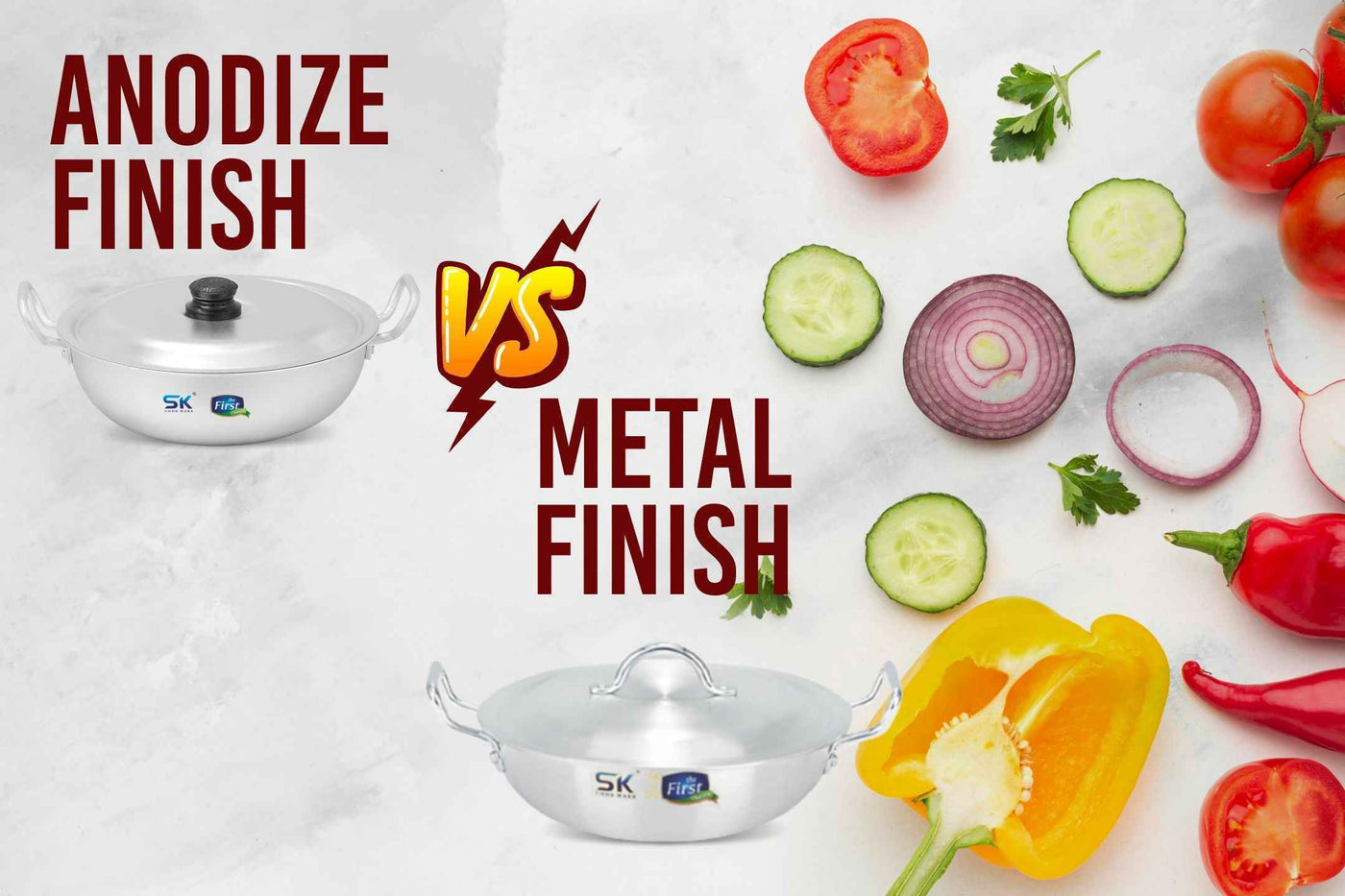To start, let's discuss what anodizing and metal finishing are. Anodizing is a process in which a metal substrate is treated with a strong electrochemical solution, causing a thin protective layer of oxide to form on the surface of the material. This layer helps to protect the substrate from corrosion and wear. Metal finishing, on the other hand, is a process that involves applying a coating or finish to a material in order to enhance its appearance and performance.

When it comes to cookware, there are pros and cons to both anodizing and metal finishing. Anodized cookware is highly durable, as the anodizing process creates a hard, abrasion-resistant coating that is extremely resistant to scratches, chips, and discoloration. Additionally, anodizing helps to reduce the amount of heat transfer between the pot or pan and the cooking surface. The downside to anodized cookware is that it is more expensive than metal finished cookware and can be difficult to maintain.
Metal finished cookware, on the other hand, is much more affordable than anodized cookware, but is not as durable. The finish is not as scratch-resistant and can discolor over time. It also does not provide the same level of protection against heat transfer.
In the end, it really depends on the individual’s needs and preferences. Anodized cookware is generally more expensive than metal finished cookware, but is much more durable and provides superior heat transfer protection. Metal finished cookware is generally less expensive, but is not as durable and does not offer the same level of protection.








